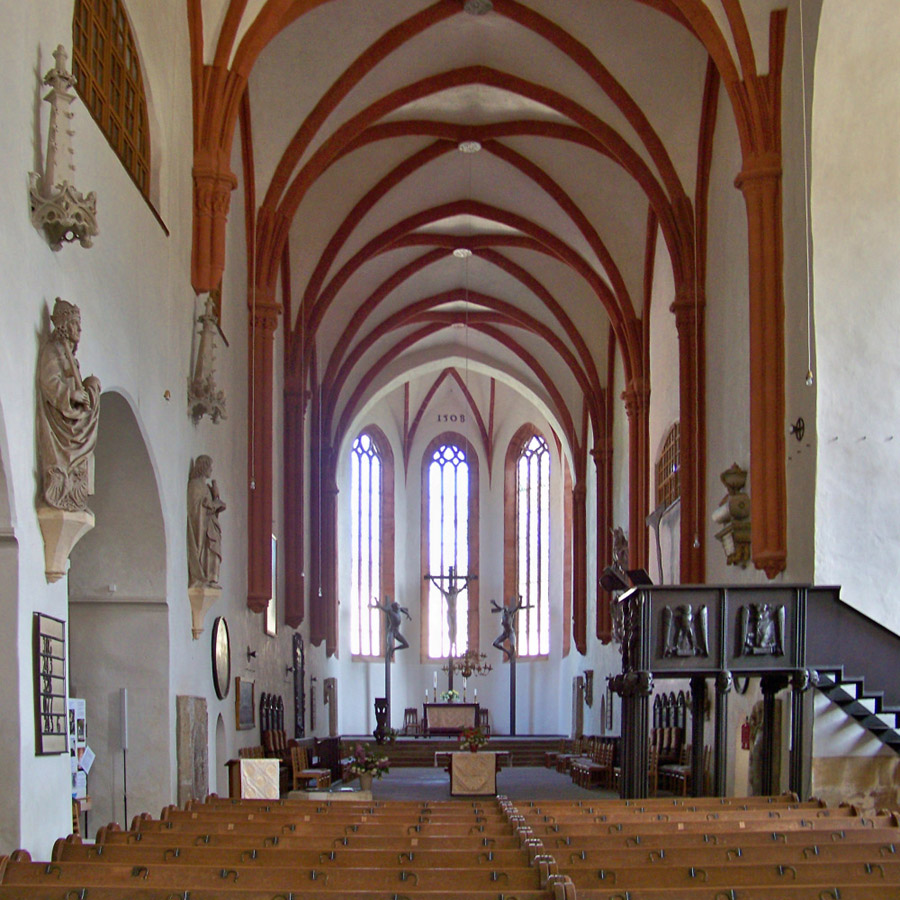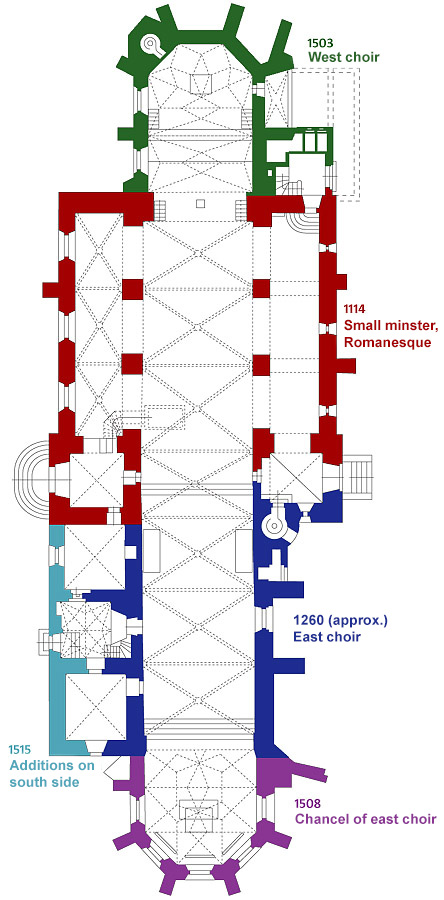Wurzen, first mentioned in documents in the year 961, is one of the oldest towns in the Free State of Saxony. The charter of donation by Emperor Otto I refers to the castellan of Wurzen (“civitas vurcine”). The town lies on the Via Regia, which in parts has an identical course with the ecumenical Way of St James. The castle was built on a rocky eminence on the right bank of the river Mulden and became the seat of a bishop when Bishop Johann VI von Sahlhausen moved his residence from Meissen to Wurzen.
Immediately next to the castle, now known as Schloss Wurzen, was built the collegiate church that is today the Dom St. Marien. The medieval church served as a place where the member of the collegiate Chapter, the canons, prayed and where Mass was celebrated. The collegiate foundation of Wurzen, in newly colonised territory at the border of the Merseburger Land, was of great importance for the spread of the Christian faith. Since the time when the bishops of Meissen resided in Wurzen, i.e. since the early sixteenth century, the collegiate church has been called a “Dom”, the German name for a cathedral or a major church. Until dissolution of the diocese of Meissen in 1581, the Catholic bishops resided in Schloss Wurzen. Bishop Johann IX von Haugwitz resigned in favour of the Chapter, and the prince elector of Saxony became the new lord of the collegiate foundation.
Bishop Herwig von Meissen consecrated the collegiate church in 1114 in honour of the Virgin Mary. It is not known whether remains of this church have been preserved to this day in the present building. The oldest surviving fabric of the church also derives from the Romanesque period. The nave of the basilica, which once had a flat ceiling rather than a vault, corresponds approximately to the present nave. The north piers and arches of the old church are preserved in today’s building and are clearly recognisable. It is unclear to what extent the two towers are of Romanesque origin.
In about 1260, the ambitious High Gothic choir at the east end was constructed. It consists of four bays and had strong buttresses, which are still visible in places on the exterior. In about 1300 the south aisle was raised in height. The church was not given uniform vaulting until about 1400.


A fire in 1470 destroyed much of the church and the archive. In the late Gothic period, Bishop Johann VI von Sahlhausen initiated an extension through the addition of choirs in the east and west. The bishop was born in 1444 in Thammenhain, near Wurzen. He demolished the old bishops’ castle and built a palace as his residence between 1491 and 1497. Under his rule a west choir was built in 1503. He added it to the collegiate church to serve as his funeral chapel. This choir gained a colourfully painted cellular vault that survives to this day. ”In this way the bishop presented himself, here at least fire in 1470 destroyed much of the church and the archive. In the late Gothic period, Bishop Johann VI von Sahlhausen initiated an extension through the addition of choirs in the east and west. The bishop was born in 1444 in Thammenhain, near to Wurzen. He demolished the old bishops’ castle and built a palace as his residence between 1491 and 1497. Under his rule a west choir was built in 1503. He added it to the collegiate church to serve as his funeral chapel. This choir was given a colourfully painted cellular vault that survives to this day. “In this way the bishop presented himself, here at least, as a territorial ruler, as his policy towards the Wettin dynasty was determined by legal views that derived from the laws applying since Ottonian times. The west choir at Wurzen is an expression of this restorative intent of an episcopal prince of the empire on the eve of the Reformation. The tomb of the bishop, who died in 1518, was destroyed during the Reformation” (Fichtner, Fritz: Der Dom zu Wurzen and seine Erneuerung, Dresden 1933; in H. Magirius, Meissner Dom vol. 1, p. 236). The year 1508 saw the extension of the east choir, where the crucifixion group and the altar stand. The date can be seen on the vault. Between the south buttresses were built small annexes, for example a room with a fireplace in about 1515. Through these late Gothic additions, the church gained the spatial structure that it retains today.
